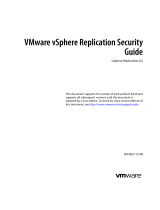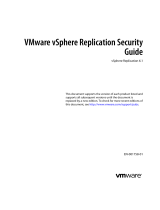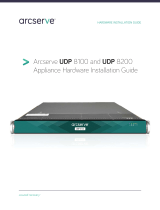
SupportAssist Gateway Connect options
SupportAssist Gateway Connect runs on a gateway server. When you select either the Gateway Connect without remote access
option or the Gateway Connect with remote access option, your appliance is added to other appliances in a SupportAssist cluster. The
cluster resides behind a single common (centralized) secure connection between Dell EMC Support servers and an off-array gateway
server. The gateway server is the single point of entry and exit for all IP-based Dell EMC SupportAssist activities for the appliances
associated with the gateway.
The gateway server is a remote support solution application that is installed on one or more customer-supplied dedicated servers. The
gateway server functions as a communication broker between the associated appliances and the Dell EMC enterprise.
For more information about SupportAssist Gateway, access the SupportAssist product page on the Dell Support website (www.dell.com/
support).
To configure your appliance to use either the Gateway Connect without remote access option or the Gateway Connect with
remote access option for SupportAssist, you need to provide the IP address and port number (9443 is the default) of the gateway
server. Also, ensure that the port is open between the gateway server and the appliance.
NOTE: The gateway server must be up and running before you configure your appliance to use it. Appliances can only be
added to the gateway from the PowerStore Manager. If the appliance is added from the gateway server, it will appear to
be connected, but will not successfully send system information.
Requirements for SupportAssist Gateway Connect
The following requirements are applicable to both the Gateway Connect without remote access and Gateway Connect with remote
access SupportAssist implementations:
• Network traffic (HTTPS) must be permitted on port 9443 (or customer specified port, if different) between the appliance and the
SupportAssist Gateway server.
• The SupportAssist must be version 4.0.5 or version 3.38.
• Ensure that the PowerStore cluster is running PowerStore OS version 1.0.1.0.5.002 or higher.
NOTE:
Never manually add or remove an appliance from the gateway server. Only add or remove an appliance from a
gateway server with the PowerStore Manager SupportAssist configuration wizard.
SupportAssist Direct Connect options
SupportAssist Direct Connect runs directly on the primary node of each appliance. In a cluster, each appliance will establish its own
connection to Dell EMC Support. Traffic is not routed through the primary appliance in a cluster. However, SupportAssist can only be
managed at the cluster level, that is, all changes are applied to every appliance in the cluster.
Enable and configure SupportAssist Direct Connect from the Support Assist page, which can be accessed through Settings and is
listed under Support in the PowerStore Manager. These actions set up the appliance to use a secure connection between itself and Dell
EMC Support. You can select one of the following remote service connectivity options for SupportAssist Direct Connect:
• Direct Connect without remote access
• Direct Connect with remote access
When you select the Direct Connect without remote access option and accept the End User License Agreement (EULA), the
appliance sets up a secure connection between itself and Dell EMC Support. This option enables two-way file transfer connectivity
capability to and from Dell EMC Support. If applicable, you can configure the connection from the appliance to an associated proxy server
(optional). If necessary, you can upgrade later to the Direct Connect with remote access configuration setup.
When you select the Direct Connect with Remote Access option and accept the End User License Agreement (EULA), the appliance
sets up a secure connection between itself and Dell EMC Support. This option enables remote access service connectivity capability with
the appliance to and from Dell EMC Support along with two-way file transfer. If applicable, you can configure the connection from the
appliance to a Policy Manager (optional) and any associated proxy servers (optional) through the PowerStore Manager.
When a new appliance is added to an existing cluster, the new appliance will detect the cluster SupportAssist settings and automatically
configure the new appliance to match. If SupportAssist Direct Connect is currently enabled, it will be automatically enabled on the new
appliance. Additional actions are not necessary. If SupportAssist Direct Connect cannot be enabled, it will not prevent the add-appliance
process from completing.
16
SupportAssist






















